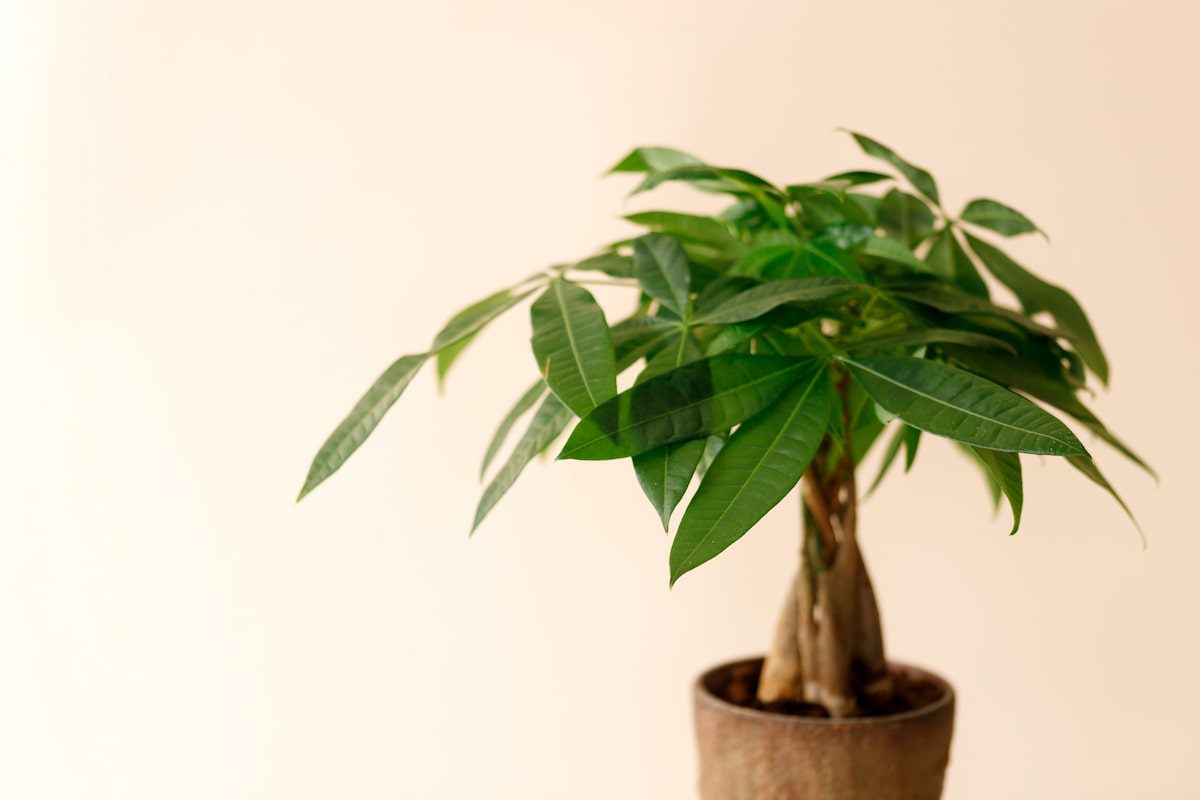Money trees are famous for their ubiquitous braids, which can add extra aesthetic appeal to the interior of your home or office.
But unknown to many people, a money tree’s braided trunk isn’t a natural feature. Instead, the trunks are normally braided by cultivators.
So, if you’ve recently purchased an unbraided money tree, your first order of business may be to braid the trunks.
However, braiding a money tree isn’t a walk in the park. That’s especially true if you’ve never cultivated this plant before.
Fortunately for you, we’ve prepared a comprehensive guide into how to braid a money tree like a pro. But first, let’s begin easy by familiarizing ourselves with what a money tree is.
Table of Contents
What Is Money Tree?
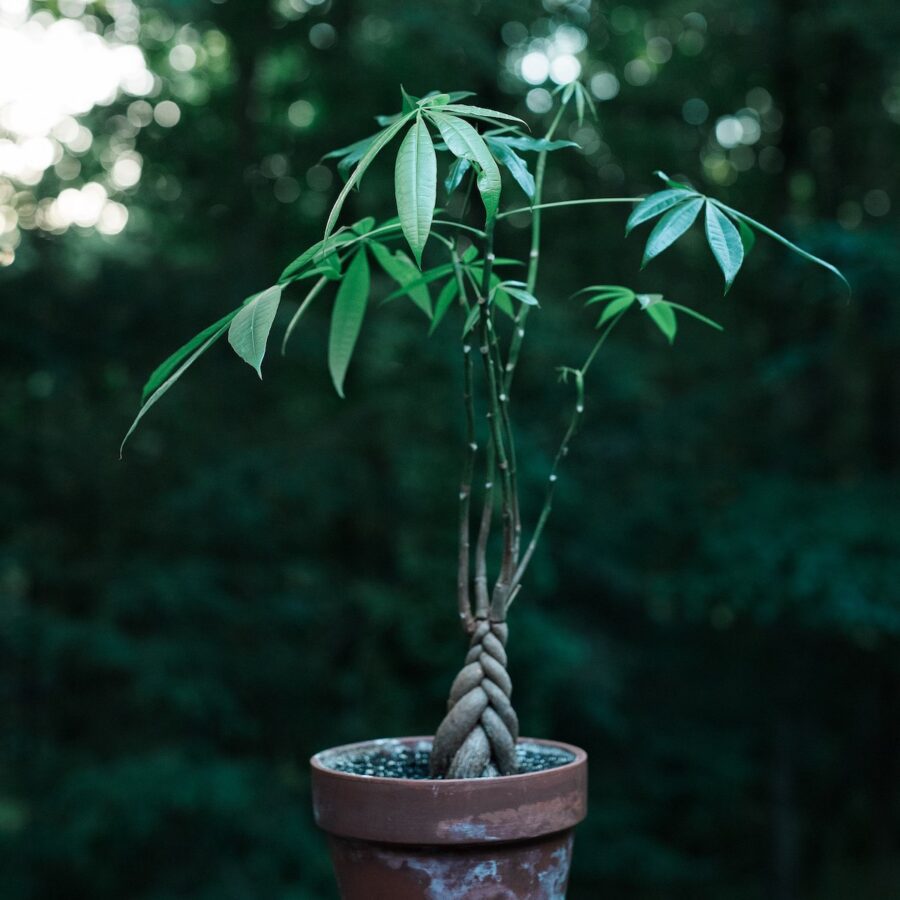
Money tree, scientifically known as Pachira aquatica, is a tropical wetland tree native to Central and South America. The tree goes by numerous other names depending on the region it’s cultivated. Its other monikers include shake money tree, French peanut, Malabar chestnut, Guiana chestnut, Saba nut, Provision tree, Monguba, and Pumpo.
Money trees belong in the mallow family Malvaceae. They’re commercially sold under the names ‘Money plant’ and ‘Money tree.’ And as their name implies, money trees are believed to bring good fortune.
How Did Money Trees Acquire Their Name?
The name ‘money tree’ has an interesting origin.
According to one story, a poor man who was praying diligently for money and wealth stumbled upon a weird-looking plant. The man took the plant home as a good omen and proceeded to cultivate it.
When the plant produced seeds, the poor man went ahead and planted those seeds. He eventually made money selling plants produced from those seeds.
Money Tree Appearance
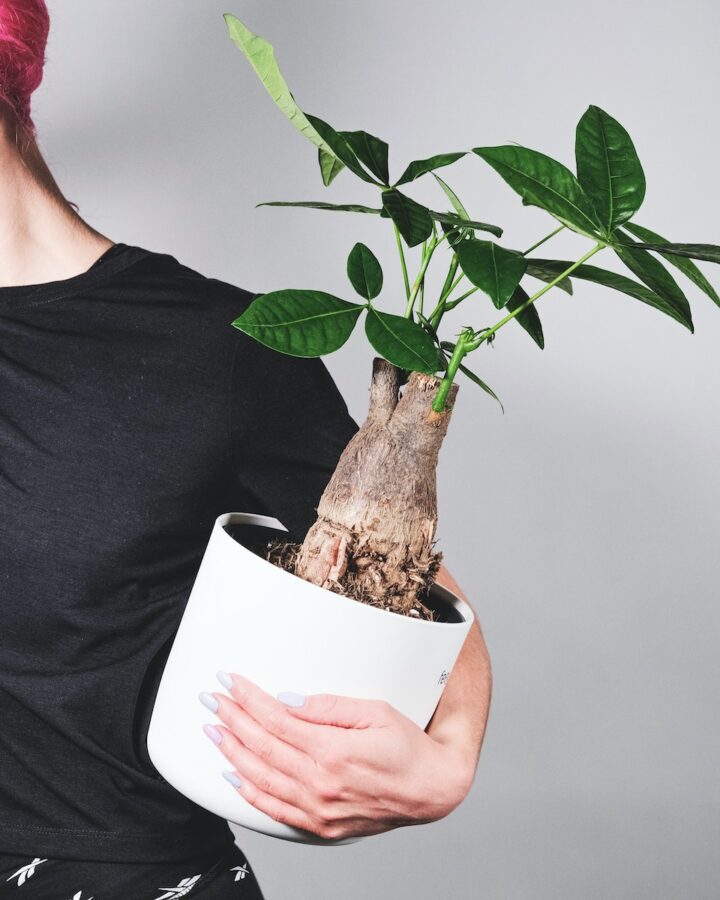
1. Size
Money trees can grow to a height of 18 m (59.1 ft.) in the wild. The plants might get even bigger with more favorable conditions in captivity.
Besides their relatively tall height, money trees also produce fairly broad crowns.
2. Appearance
a) Leaves
Money trees produce shiny green, composite hand-shaped leaves. The leaves come with up to nine leaflets and are slightly leathery.
b) Flowers
Money tree produces some of the most colorful blossoms among the world’s flowering plants. The flowers grow from long, narrow petals which open like banana peels.
When in bloom, money tree flowers appear in a range of color variations, from greenish-yellow to cream.
c) Bark
The bark of a money tree is incredibly smooth. That smoothness comes in quite handy when braiding the trees.
The color of mature money tree bark ranges from brown to gray. Younger branches have a rich green color.
d) Roots
Money trees produce relatively thick roots. The main root has smaller attached roots, which help in absorbing mineral salts while also serving as water reservoirs.
Braiding a Money Tree: A Definitive Guide
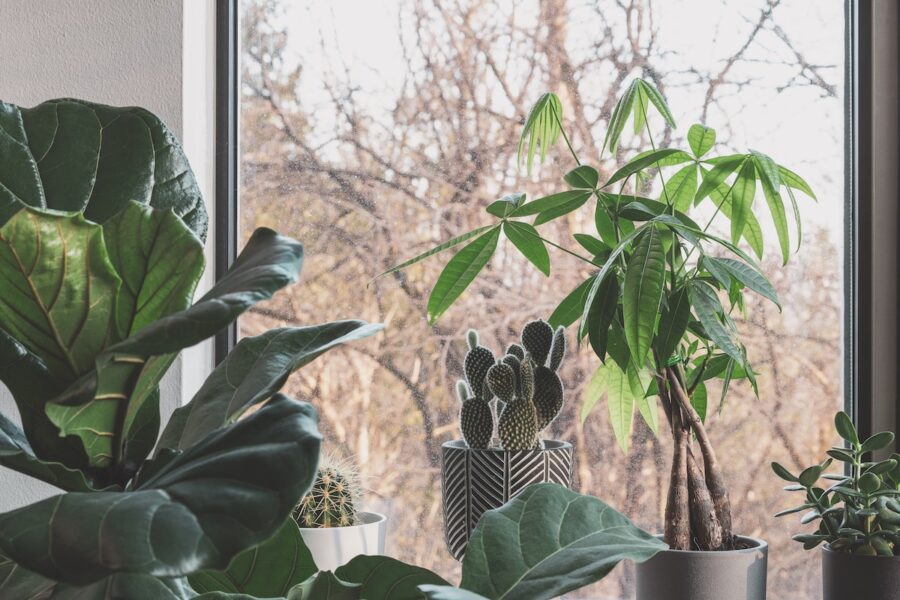
First off, it’s important to note that braiding a money tree is most successful when the trees are healthy.
Like most houseplants, money trees thrive under certain ideal conditions. Maintaining a suitable growing environment will ensure that your money tree plants are healthy at all times, thereby making the braiding process easier.
Generally, money trees thrive under the following conditions
a) Sunlight
Money trees do well in bright, indirect light. Direct sunlight might scorch the plant’s leaves.
The fact that money trees are most suited for indirect light makes them highly adaptable for indoor growing.
However, you’ll need to place the plants closer to windows to allow them harness maximum light. Grow lights are generally unnecessary unless you’re raising the plants in a greenhouse.
b) Water
Although the money tree is a tropical plant, it requires moderate water supply.
Like most houseplants, it’s best to water a money tree occasionally (preferably between one and three weeks) or when the leaves show visible signs of wilting.
c) Temperature
Money trees do well under temperature conditions ranging from 12 degrees Celsius to 25 degrees Celsius.
The trees are fairly resilient and can withstand temperature conditions as low as 5 degrees Celsius and as high as 35 degrees Celsius.
However, the plants will probably thrive better at around 20 degrees Celsius.
d) Humidity
Money trees prefer moderate-to-high humidity. You can achieve those conditions in an indoor environment using regular fans.
Better yet, you might consider investing in humidifiers and dehumidifiers or growing the plants in humidity-enhancing pebble trays.
But if your indoor humidity doesn’t fluctuate too much, placing money trees in a bright, steamy bathroom would do just fine.
Note:
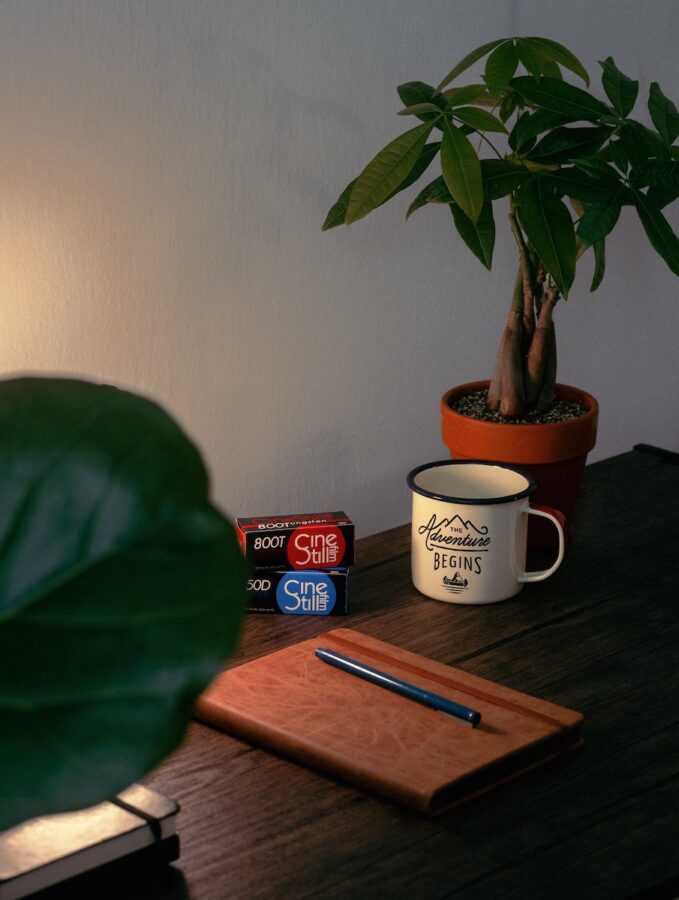
Even if you’ve managed to grow your money tree under these conditions, it’s still necessary to nourish the trees before braiding them.
You can do that by transferring the plants into larger pots to allow the roots to spread out. Insist on well-drained soil, such as sandy soil. Also, prune the branches where necessary and check for any cracks in the barks that could interfere with the braiding process.
Another thing to note here is that money trees are highly sensitive to environmental changes. Therefore, it’s important to go slow on any changes you may wish to implement on the plants. Ensure that such changes happen a few weeks before the actual braiding begins. That allows the plants to emerge from the temporary “stress” induced by drastic changes to their environment.
And needless to mention, braiding should only be done when the plant is still young and supple. Avoid braiding a money tree that’s already past its prime.
In the same breath, braiding shouldn’t be done to very young money trees, such as those in their seedling growth phase. Experts recommend waiting until the plant is at least 14 inches tall and the trunk is hard enough. Otherwise, the tree could experience growth retardation.
If everything looks good so far, proceed to braid your money tree by following the below procedure:
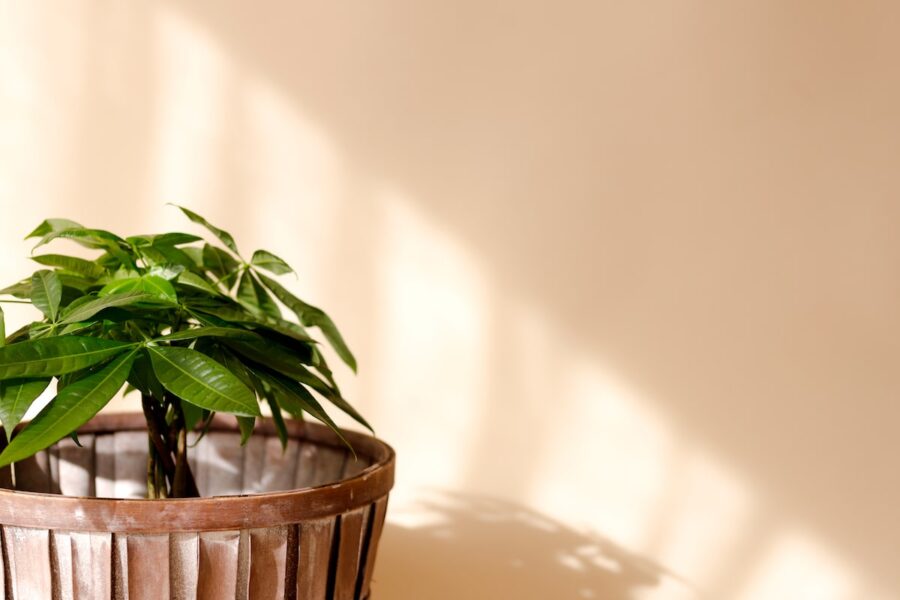
i. Take three to five stems into your hand and overlap them loosely, starting from the base of the plant and ensuring that you leave considerable space between each successive crossing.
Avoid twisting the branches too tightly over one another as that could prevent them from growing.
Also, handle the tender stems with gentle hands to avoid snapping them.
Most importantly, stop braiding when you get to the leafy growth.
ii. Once the stems are gorgeously overlapped, tie a string or duct tape loosely around the uppermost part of the braid.
iii. Lastly, anchor both ends of the string to two stakes.
This is important for holding the braid together as the money tree continues to grow.
The stakes should ideally be positioned on both ends of the money tree and each of them should reach the same height as the leafy part of the plant.
It’s also worth noting that braiding a money tree is not a one-time event. As the plant continues to grow, you’ll need to braid the trunk a few more inches.
Ideally, this should happen every one or two months. But it largely depends on how fast the tree grows.
Continue braiding occasionally until the money tree grows to your desired height. At this point, the braids can support themselves naturally throughout the rest of the plant’s life cycle. So, you can go ahead and remove the stakes as well as untie the string. Leaving the anchor and string on a fully braided money tree affects the plant’s aesthetics.
Wrap Up
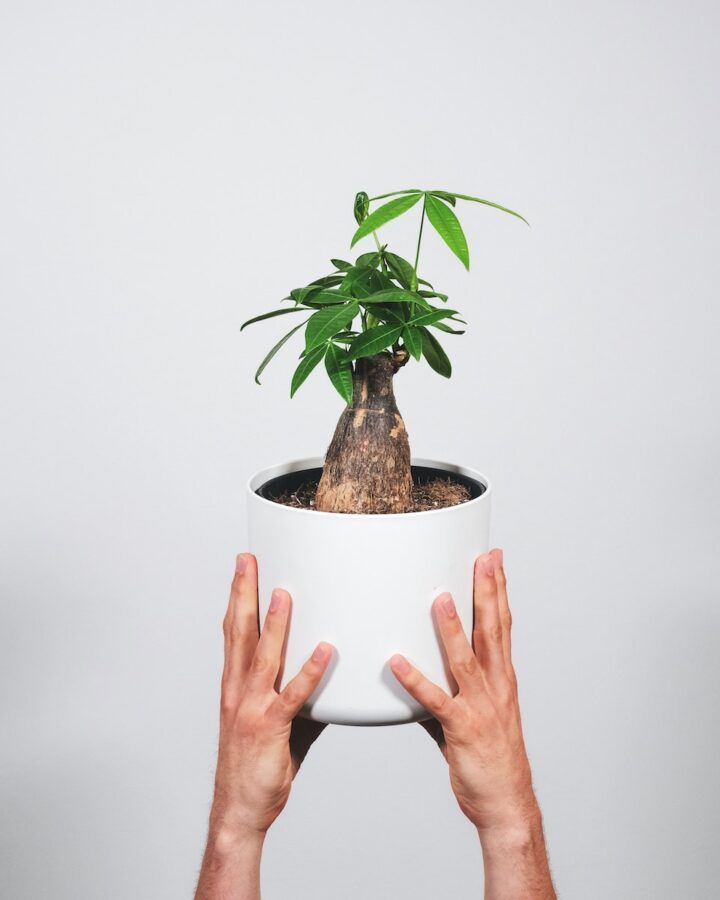
Braiding a money tree is an ingenious way of adding extra aesthetic appeal to this tropical plant (and by extension your home or office). Braiding also brings the various branches together, making a money tree grow much stronger.
We hope you can save this post for reference the next time you want to braid a money tree.

